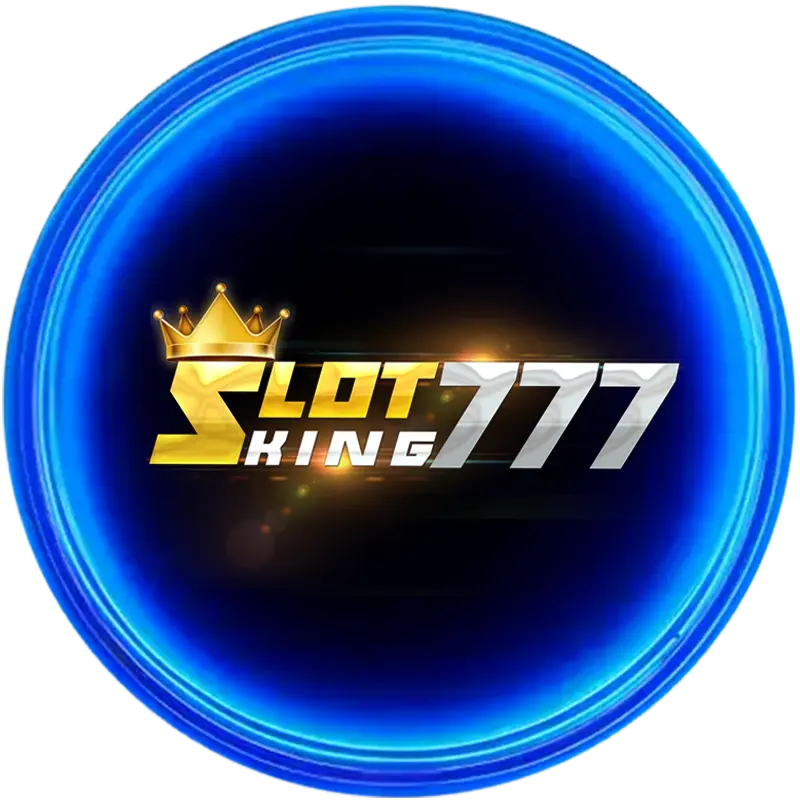

สล็อต888 ระบบ AI 2025 ใหม่ล่าสุด กำลังมาแรงสุด รับประกันความมันส์ กับเกมแตกง่ายที่ให้กำไรทะลุจอ พร้อมระบบ API อันดับ 1 ที่ทันสมัย ทำให้ทุกการเล่นเกมสล็อต ลื่นไหล ไม่มีสะดุด ระบบถูกพัฒนามาให้แตกหนัก แตกบ่อยที่สุด เป็น สล็อตเว็บตรง อันดับ 1 ในเรื่องความปลอดภัยและการจ่ายเงินจริง เว็บตรงแตกหนักรับรองว่าไม่โดนโกงแน่นอน สล็อต888 ทุนน้อยก็เล่นได้ ฝากถอนง่ายผ่านระบบที่เชื่อถือได้ ไม่มีขั้นต่ำ แตกง่าย เล่นสล็อตได้ทุกเวลาที่ต้องการ และลุ้นรางวัลใหญ่ตลอดทั้งวัน
เว็บสล็อต ใหม่ล่าสุด อัปเดตระบบให้ทันสมัย เล่นได้ง่าย ๆ ผ่านมือถือ รองรับทั้ง iOS และ Android สะดวกทุกที่ทุกเวลา ปรับเบทได้ตามต้องการ เริ่มต้นเล่นง่ายแม้มีทุนน้อยก็สนุกได้ ไม่มีขั้นต่ำ เว็บสล็อตเว็บตรง รับประกันโบนัสแตกบ่อย แตกหนัก การันตีความปลอดภัยในทุกการเล่น ด้วยระบบที่รองรับการเล่นแบบลื่นไหล สบายใจหายห่วงว่าเล่นแล้วได้เงินจริง สล็อตเว็บตรงอันดับ 1 ที่มีเกมหลากหลายให้เลือก แนะนำเลยว่าห้ามพลาด เว็บสล็อตใหม่ล่าสุด ทุกเกมสล็อต888 ให้ลุ้นรางวัลใหญ่แบบไม่ต้องรอนาน
สารบัญ
Toggle
สล็อต888 คือ สล็อตเว็บตรงแท้ 100% ไม่ผ่านเอเย่นต์ ที่คุณสามารถเชื่อถือได้ มั่นใจได้ว่าเป็นลิขสิทธิ์แท้ จากค่ายเกมอันดับ 1 นอกจากเกมสล็อตที่มีโบนัสแตกง่าย ค่า RTP สูงแล้ว สล็อตเว็บตรง100% ยังมีระบบอัตโนมัติ ทำให้การฝาก-ถอนสะดวกและรวดเร็วสุด ๆ เล่นได้แบบเรียลไทม์ผ่านระบบ SPIN ที่มีความเสถียรสูง ทุก ๆ สปิน เว็บสล็อตแท้ 100% ไม่ใช่แค่การโฆษณาแน่นอน และจะพาคุณไปลุ้นรางวัลใหญ่ โดยเฉพาะ สล็อต888 มีเพย์ไลน์ ที่ชัดเจน แตกบ่อย เว็บสล็อต888 แท้เปิดโอกาสให้เล่นได้อย่างมั่นใจ ปลอดภัย ไม่มีหลอกลวง
ถ้าคุณอยากเล่น สล็อต888 ให้คุ้ม และทำกำไรได้จริง ต้องเลือก สล็อตเว็บตรง ที่เชื่อถือได้ ปลอดภัยที่สุด การเลือกเล่นกับ slot เว็บตรง ที่รองรับทรูวอเลท และบัญชีธนาคาร จะทำให้คุณสะดวกสบายในการฝาก-ถอนแบบอัตโนมัติ โดยไม่ต้องกังวล เพราะเป็น เว็บตรง สล็อตฝากถอน ไม่มี ขั้นต่ำ 1 บาทก็ ถอนได้ และไม่มีค่าธรรมเนียมแอบแฝง ทุกการเล่นก็จะมั่นใจได้ว่าได้รับเงินจริง โดยเฉพาะระบบ สล็อตเว็บตรง ที่รองรับทุกแพลตฟอร์ม และให้คุณเพลิดเพลินไปกับการ ปั่นสล็อต888 ที่ไม่มีข้อจำกัด ไม่ว่าจะฝากหรือถอนก็ง่ายที่สุด พร้อมโอกาสรับโบนัสเต็ม ๆ ทุกครั้งที่เล่น สล็อต เว็บตรงไม่ผ่านเอเย่นต์ไม่มีขั้นต่ำ แนะนำอีกหลายเหตุผลที่ควรมาเล่นเกมที่นี่ ดังต่อไปนี้
เว็บสล็อต888 ที่คุณเลือกเล่นต้องมีความน่าเชื่อถือ 100% ถ้าคุณอยากเล่นสล็อต888 แบบปลอดภัย ต้องเลือกเว็บที่ถูกกฎหมายและมีใบรับรองจากต่างประเทศ การอัปเดตใหม่ ๆ ทำให้เกมมีความหลากหลาย และรองรับมาตรฐานระดับสากล ดังนั้น มั่นใจได้เลยว่าเว็บที่มีใบรับรองจะให้ประสบการณ์เล่นสล็อตที่คุ้มค่า ปลอดภัย ไม่มีการโกงแน่นอน เล่นได้สบายใจทุกครั้ง
การเล่นสล็อต888 จากลิขสิทธิ์แท้ผ่านระบบ API แท้ จะทำให้คุณมั่นใจได้ว่าเล่นได้อย่างปลอดภัย ระบบที่ทันสมัยอัปเดตตลอดเวลา ช่วยให้ทุกการเล่นเกม API ราบรื่น ไม่มีสะดุด อีกทั้งยังรองรับทุกแพลตฟอร์ม เล่นได้ทั้งมือถือและคอมพิวเตอร์ ทำให้คุณสามารถเพลิดเพลินไปกับเกมที่แตกง่ายจาก สลอตเว็บตรง เชื่อถือได้ ทุกการหมุน
ระบบทรูวอเลทที่มีให้ใช้ตลอด 24 ชั่วโมงทำให้การเล่นเกมสะดวกมากขึ้น ไม่ต้องใช้บัญชีธนาคารก็สามารถฝาก-ถอนได้ง่าย ๆ ผ่านวอเลท การเล่นผ่าน สล็อตวอเลทเว็บตรง ช่วยให้คุณมั่นใจได้ว่าได้เงิน 100% ไม่มีปัญหาการโกง ระบบนี้ทำให้การฝากถอนผ่านบัญชีธนาคารเป็นเรื่องง่ายและรวดเร็ว บริการดีแบบนี้ไม่ต้องรอ เว็บสล็อตวอเลท เล่นได้ทุกที่ ทุกเวลา ด้วยความ ปลอดภัย ที่คุณไว้ใจได้
จ่ายง่าย ถอนไวใน 1 นาทีมีจริง เล่นสล็อต888 ผ่าน เว็บตรง วอเลท ที่รับทรูวอเลทและบัญชีธนาคาร ทำให้คุณฝาก-ถอนได้รวดเร็วด้วยระบบอัตโนมัติ ไม่ต้องรอนาน การันตีจ่ายเงินจริง ไม่มีโกง สนุกกับการเล่นเกม สล็อตรับวอเลท ได้อย่างมั่นใจทุกครั้ง และไม่ต้องห่วงเรื่องการถอนเงิน สล็อต888 วอเลท ระบบทำงานอย่างรวดเร็ว ปลอดภัยผ่านบัญชีธนาคาร รับเงินได้ทันทีภายใน 1 นาที การันตีทุกการหมุนสนุกไปกับการจ่ายเงินจริงที่ไม่มีปัญหา
เกมสล็อตเวอร์ชันใหม่มาแล้ว! เกมใหม่อัปเดต ปั่นสล็อต888 เพลิน ๆ ไม่มีสะดุด พร้อมฟีเจอร์ เกมสล็อตสุดมันส์ ที่อัปเดตก่อนใคร เกมใหม่ล่าสุดที่เต็มไปด้วยโบนัส และ FREE SPIN ที่ให้คุณลุ้นรางวัลใหญ่ทุกครั้งที่หมุน สล็อต888 วางใจได้ว่าปลอดภัย 100% ด้วยระบบที่รองรับ สล็อตเว็บตรง ฝาก-ถอน true wallet ไม่มีธนาคาร ไม่มีขั้นต่ำ ไม่มีบัญชีธนาคารก็เล่นได้ ไม่มีกำหนดขั้นต่ำในการฝาก-ถอน มั่นใจได้เลยว่า เล่นสล็อตได้สะดวกทุกที่ทุกเวลา พร้อมลุ้นโชคไปกับ สล็อต ที่ดีที่สุด อย่าพลาด
อยากเล่น สล็อต888 แบบเซียนไหม? วันนี้เรามาเผยเทคนิคพิเศษทำเงินที่มือใหม่ต้องรู้กัน การปรับเบทสล็อตให้เหมาะสมกับเกมเป็นสูตรที่ช่วยเพิ่มโอกาสชนะ และการเลือก เกมสล็อตแตกบ่อย ก็สำคัญมาก ไม่ใช่แค่หมุนไปเรื่อย ๆ แต่ต้องรู้จังหวะในการเพิ่มหรือลดเบทเพื่อให้ได้กำไรสูงสุด เช่น เทคนิค สล็อต888 นี้จะทำให้คุณเล่นสล็อตได้เงินจริงแน่นอน เริ่มต้นจากการเล่นอย่างใจเย็น และทดลองวิธีต่าง ๆ เพื่อหาวิธีทำเงินที่เหมาะกับคุณ ปั่นสล็อตให้สนุกแล้วการได้เงินก็จะตามมา โดยมีวิธีที่น่าสนใจเกี่ยวกับเกมบน เว็บตรง ที่ช่วยเพิ่มโอกาสรวยมาแนะนำได้ดังนี้

ปั่นสล็อต งบประหยัดเริ่มต้นเพียง 1 บาทก็เล่นได้ กับ เว็บตรง ที่รองรับ สล็อตวอเลท และระบบฝาก-ถอนผ่านทรูวอเลท ที่ไม่มีขั้นต่ำ ช่วยให้คุณสนุกได้โดยไม่ต้องกังวลเรื่องเงินทุน ไม่ต้องทำเทิร์นให้ยุ่งยาก เลือกเล่นเกมสล็อต ที่มีอัตราการแตกหนัก แตกบ่อย พร้อมทั้งโอกาสลุ้นโบนัสใหญ่ทุกครั้งที่ SPIN ทุกการหมุนมีความหมาย และ เว็บตรง สล็อตฝากถอน ไม่มี ขั้นต่ำ 1 บาทก็ ถอนได้ คุณสามารถทำธุรกรรม Slot wallet ได้ทันที ไม่ต้องรอข้ามวัน สล็อตเว็บตรง ปลอดภัย 100% และถอนเงินทรูวอเลท ได้ไม่มีปัญหา ควบคุมเงินทุนได้ดี สล็อตเว็บตรงฝากถอน true wallet ไม่มีขั้นต่ํา จะเล่นทุนน้อยหรือมากก็ไม่ใช่ปัญหา เล่น สล็อต888 อย่างมั่นใจ ทำกำไรแล้ว ถอนเงินได้ในทุกครั้ง
มั่นใจทุกสปินด้วยการเลือกเล่นสล๊อต กับ เว็บตรง ที่เชื่อถือได้ วันนี้เรามีรีวิวจริงกับ 6 เว็บสล็อต เว็บตรงแตกหนัก การันตีความปลอดภัยและจ่ายจริง เว็บ slot ถูกกฏหมาย 100% สล็อต พร้อมให้คุณสนุกกับเกมสล็อต ที่แตกหนักและจ่ายรางวัลใหญ่ ไม่ต้องกังวลเรื่องการโกงหรือปัญหาการถอนเงิน สล็อต888 เชื่อถือได้ที่เราแนะนำคือ เว็บสล็อตตรง ทั้งหมด ที่สามารถถอนเงินได้จริงในเวลาอันรวดเร็ว เว็บตรงสล็อต เล่นแล้วรับรางวัลจริง ไม่มีปัญหากับระบบการเงิน เข้าเล่นได้ง่าย ไม่ซับซ้อน และคุณจะได้สัมผัสกับประสบการณ์การเล่นที่ดีที่สุด โดยจะขอแนะนำ 6 เว็บตรง น่าสนใจ ดังต่อไปนี้

เว็บสล็อตแตกหนัก ที่สุด มาพร้อมฟีเจอร์สุดเจ๋งและระบบออโต้ ที่ช่วยให้การเล่นของคุณลื่นไหล ไม่มีสะดุด ทุกการ SPIN บนเว็บ Slotking777 คุ้มค่าที่สุด พร้อมเกมสนุก ๆ ที่รับประกันความปลอดภัย 100% อย่ารอช้าสมัครเลย! แล้วคุณจะได้สัมผัสประสบการณ์เล่นสล็อตที่ดีที่สุด พร้อมลุ้นโบนัสและรางวัลใหญ่ทุกครั้งที่หมุน

เล่นเกมสล็อตที่แตกบ่อยที่สุด ไม่มีบัญชีธนาคารก็ฝาก-ถอนได้ผ่านวอเลท 24 ชั่วโมง ระบบการเงินรวดเร็ว และเชื่อถือได้ เกม ลิขสิทธิ์แท้ มีให้เลือกเล่นมากมาย พร้อมโบนัสและรางวัลใหญ่ทุกครั้งที่หมุน ไม่ต้องกังวลเรื่องความปลอดภัย เพราะระบบทำงานอย่างมืออาชีพ เล่นได้ทุกเวลา แค่สมัคร เว็บสล็อต นี้ก็เริ่มสนุกได้เลย!

อัปเดตใหม่ล่าสุด เล่นเกมสล็อตที่มีค่า RTP สูง และโบนัสเพียบ พร้อมรับ Cash Back คืนยอดเสียทุกครั้งที่เล่น มั่นใจได้ในความปลอดภัย 100% ไม่มีปัญหาการโกงหรือข้อมูลรั่วไหล ทุกเกมคัดสรรมาอย่างดีเพื่อให้คุณได้สนุกและทำกำไรจริง ลุ้นโบนัสใหญ่ได้ทุกสปิน เล่นได้เต็มที่ตลอดเวลา ไม่พลาดโอกาสดีๆ ที่จะทำให้คุณรวยจากเกมสล็อต

เล่นสล็อตผ่านมือถือได้ง่าย ๆ ด้วยระบบ Ai ที่ทำให้การหมุนไม่ถึง 1 วินาที เล่นสล็อตสะดวกสุด ๆ ฟรีค่าธรรมเนียม ทุกการทำธุรกรรมรวดเร็ว ปลอดภัย ระบบที่ทำงานแบบเรียลไทม์ ทำให้คุณเพลิดเพลินไปกับการเล่นโดยไม่สะดุด พร้อมลุ้นรางวัลใหญ่ได้ทุกครั้งที่หมุน เล่นได้ทั้งวันไม่มีเบื่อ สนุกและมั่นใจได้เลยว่าไม่มีปัญหากวนใจ

เกมแตกหนักจ่ายเงินจริงทุกยอด มั่นใจได้กับ เว็บสล็อต ที่การันตีปลอดภัย โปร่งใส ระบบอัตโนมัติทำให้ทุกธุรกรรมรวดเร็ว สมัครสมาชิกง่าย ๆ พร้อมรับโอกาสในการลุ้นรางวัลใหญ่ทุกการหมุน เล่นแล้วรับเงินจริงไม่มีปัญหา ไม่ต้องกังวลเรื่องการโกง รับประกันความคุ้มค่า

สนุกไปกับการเล่นสล็อต ภาพ 3 มิติ ที่มีโบนัสจัดเต็ม เกมเล่นง่าย เข้าใจได้ทันที พร้อมค่า RTP 90% ที่ให้โอกาสชนะสูง เมนูภาษาไทยทำให้ใช้งานสะดวก ไม่ยุ่งยาก เข้าเล่นสล็อตได้ทุกที่ ทุกเวลา เล่นง่าย เพลิดเพลินไปกับกราฟิกสุดสวย และฟีเจอร์สนุก ๆ ที่จะทำให้คุณไม่อยากหยุดเล่น
ทดลองเล่นสล็อตแบบไม่จำกัด เล่นฟรีได้ทุกค่ายเกมที่คุณชอบแบบไม่มีสะดุด ไม่ว่าจะเป็นบนมือถือ เช่น Android ,iOS ก็เล่นได้อย่างลื่นไหล สนุกไปกับเกมสล็อตทดลองเล่นหลากหลาย ที่คุณสามารถทดลองเล่นได้ก่อนใคร ไม่ต้องลงทุนก็สัมผัสความมันส์บน สล็อต888 ได้เต็มที่ อยากทดลองเล่นเกมไหนก็ทำได้ทันที ทางเข้าเล่น รวดเร็ว ปลอดภัยแน่นอน สล็อต888 นี้ให้คุณทดลองเล่นสล็อตแบบไม่มีข้อจำกัด สนุกบนแพลตฟอร์มมือถือได้ทุกที่ทุกเวลา ไม่ต้องเสียเงินแม้แต่บาทเดียว
หากคุณเป็นมือใหม่ ที่กำลังมองหาเกมสล็อตที่ทำเงินได้จริง ต้องไม่พลาด 6 เกมดังที่มีค่า RTP สูงสุด มาแรง และโบนัสแตกหนัก สล็อต เว็บตรง แตกง่าย ไม่มีขั้นต่ำ ทุกเกม สล็อต888 คัดสรรมาเป็นพิเศษ มีอัตราการจ่ายที่สูง แตกไว เพื่อให้คุณทำกำไรได้ง่ายๆ เล่นแล้วสนุกไม่รู้เบื่อ บน เกมสล็อต888 ไม่ผ่านเอเย่นต์ ไม่มีขั้นต่ำ มั่นใจได้ว่าไม่มีขั้นต่ำในการฝาก-ถอน รองรับเมนูภาษาไทยให้เข้าใจง่าย พร้อมให้คุณลุ้นรางวัลใหญ่ทุกการหมุนสล็อต ไม่ต้องห่วงเรื่องความปลอดภัย เพราะระบบอัตโนมัติทำงานรวดเร็วและปลอดภัย เล่น สล็อตแตกง่าย แตกหนัก ได้จริง รับเงินเร็ว แบบไม่ต้องรอนาน แนะนำ 6 เกมฮิตที่ควรเข้ามาเล่นดังต่อไปนี้

ลองเสี่ยงโชคกับ Lucky Piggy สล็อตหมู สุดน่ารัก ที่มีอัตราแตกอยู่ที่ 96.79% ปรับเบทได้ตามใจ ไม่มีค่าธรรมเนียม และไม่มีขั้นต่ำในการเดิมพัน พร้อมทั้งหมุนฟรีสปินเพื่อรับโบนัสจัดเต็มทุกครั้งที่เล่น ระบบอัตโนมัติทำให้การเล่นสะดวก รวดเร็ว รับประกันความสนุกและโอกาสชนะที่ไม่เหมือนใคร

เข้าสู่โลกของ Rooster Rumble สล็อตธีมไก่ชน ที่มาพร้อมฟีเจอร์ Turbo เร็วแรงเต็มสปีด อัตราการแตกสูงถึง 96.75% ลุ้นสนุกกับโหมดพิเศษฟรีสปิน ที่ให้คุณหมุนอย่างจุใจ ทดลองเล่นได้ก่อนใคร เพื่อสัมผัสประสบการณ์การชนไก่สุดมันส์ ทุกสปินลุ้นโบนัสใหญ่ได้ตลอดเวลา ไม่ควรพลาด

สัมผัสความสนุกกับ Emoji Riches สล็อต ที่เต็มไปด้วยอิโมจิสุดน่ารัก ลุ้นโชคไปกับฟีเจอร์ SPIN ที่รองรับมือถือทุกระบบ พร้อมอัตราการแตกที่ 96.78% ให้คุณมีโอกาสชนะสูงสุด เพลิดเพลินกับการเล่นสล็อตง่าย ๆ รองรับภาษาไทย สปินให้สุดแล้วรอรับรางวัลใหญ่ได้ทันที

สัมผัสความสนุกกับ Supermarket Spree สล็อต ธีมจ่ายตลาด ที่เต็มไปด้วยความตื่นเต้น เกมสล็อตอัตราการแตกที่ 96.71% พร้อมฟรีสปินที่ให้คุณลุ้นรางวัลใหญ่ทุกครั้งที่หมุน ระบบอัตโนมัติทำให้ทุกการเล่นรวดเร็ว สะดวก สมัครเล่นง่าย ๆ รับประกันความสนุกที่ไม่ซ้ำใคร

ร่วมผจญภัยกับ Heist Stakes จอมโจรปล้น ที่มาพร้อมเพย์ไลน์มากมาย สล็อตอัตราการแตกสูง ค่า RTP 96.72% ปั่นสล็อต ลุ้นรางวัลใหญ่กับฟีเจอร์หมุนฟรีสปิน สนุกไปกับระบบอัตโนมัติที่ทำให้ทุกการหมุนเป็นเรื่องง่าย พร้อมโอกาสทำกำไรที่ไม่เหมือนใคร ถ้าคุณพร้อมสำหรับการปล้นครั้งใหญ่ ลองเลย

ลุ้นรางวัลหวาน ๆ กับเกมสล็อต Candy Bonanza เต็มไปด้วยลูกกวาดน่ารัก มาพร้อมระบบอัตโนมัติ ที่ให้คุณปั่นสล็อตได้ง่ายดาย อัตราการแตกค่า RTP 96.72% พร้อมสูตรสล็อตช่วยเพิ่มโอกาสชนะให้มากขึ้น สนุกไปกับการผสมผสานของสีสันและโบนัสที่รอให้คุณมาคว้า
สล็อต888 ที่มีใบเซอร์รับรอง 100% พร้อมความปลอดภัยสูงสุด เล่นสล็อตได้ทุกที่ทุกเวลา ไม่ต้องห่วงเรื่องการโกง เว็บตรงชั้นนำที่มีเกมแตกง่ายจริง พร้อมรางวัลใหญ่รอคุณอยู่ ด้วยระบบ สล็อต888 เว็บตรง ฝาก-ถอน true wallet ไม่มีขั้นต่ำ ช่วยให้การทำธุรกรรมสะดวกและรวดเร็ว ไม่ว่าจะเล่นเพียง 1 บาทก็สามารถร่วมสนุก สล็อตเว็บตรงแตกหนัก ได้ทุกเวลา ไม่ต้องห่วงยอดเสีย เพราะเรามีโปรโมชั่นคืนยอดเสียให้สมาชิกทุกท่านทุกวัน ทุกการหมุนเกมสล็อตมีโอกาสแตกหนัก และทำกำไรได้จริง สมัครง่าย เล่นได้ทันที การันตีได้เงินไม่มีเงื่อนไขซับซ้อนแน่นอน

ตอบ : เลือกเล่น สล็อต888 ที่มีใบเซอร์รับรอง ความน่าเชื่อถือสูง จ่ายจริง ไม่ผ่านเอเย่นต์ รองรับทรูวอเลท ฝากถอนรวดเร็ว และมีรีวิวดีจากผู้เล่นจริง เพื่อเพิ่มโอกาสทำกำไรได้อย่างปลอดภัย
ตอบ : เลือกเล่น สล็อต888 ที่มีค่า RTP สูง โบนัสแตกบ่อย รองรับแพลตฟอร์มต่าง ๆ พร้อมการันตีความปลอดภัย สล็อตเว็บตรง ที่มีใบอนุญาต และรีวิวจากผู้เล่นจริง จะช่วยเพิ่มโอกาสชนะโบนัสใหญ่ได้บ่อยครั้ง
ตอบ : เว็บตรง ที่มีเกม PG สล็อต ให้เลือกเล่นมากที่สุด คือ เว็บตรงสล็อต ที่มีการอัปเดตเกมใหม่เสมอ รองรับทุกแพลตฟอร์ม พร้อมมีระบบการฝากถอนที่รวดเร็ว และการันตีความปลอดภัย